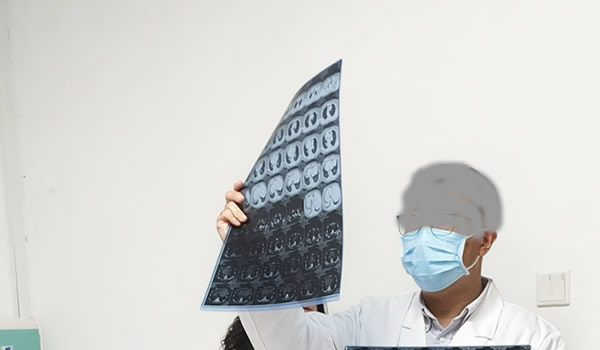Asia is home to some of the world’s fastest-aging populations, with countries like Japan, Singapore, and China experiencing rapid growth in their elderly populations. Healthy aging is not simply about living longer but living better—maintaining independence, vitality, and mental well-being. This guide provides a holistic lifestyle framework tailored for Asia’s cultural and health realities.

The Importance of Healthy Aging in Asia
- Demographic Shift: By 2050, one in four Asians will be over 60.
- Cultural Context: Family-centered caregiving traditions are changing due to urbanization.
- Healthcare Burden: Chronic diseases such as heart disease, diabetes, and dementia are rising.
Healthy aging requires a proactive approach—focusing on prevention, daily routines, and lifelong learning.
Step 1: Nutrition for Longevity
Diet plays a central role in aging well.
- Traditional Asian Diets: Rich in rice, vegetables, soy, fish, and tea—associated with longevity.
- Modern Adjustments: Reduce processed foods, excess sugar, and fried snacks.
- Anti-Inflammatory Foods: Green leafy vegetables, turmeric, ginger, and omega-3-rich fish.
- Protein Intake: Adequate protein prevents muscle loss (sarcopenia). Include tofu, beans, lean meat, and eggs.
- Hydration: Elderly individuals often under-drink; encourage regular water and herbal teas.
Tip: Follow the “80% rule” (stop eating when 80% full), practiced in Okinawa, Japan—one of the world’s longest-living communities.
Step 2: Exercise to Stay Strong and Independent
Regular movement prevents frailty and supports heart and brain health.
- Aerobic Exercise: Walking, tai chi, or swimming for cardiovascular health.
- Strength Training: Resistance bands or light weights 2–3 times per week to prevent muscle decline.
- Flexibility & Balance: Yoga or qigong reduce fall risks.
- Everyday Movement: Gardening, household chores, and playing with grandchildren count as exercise.
Practical tip: Aim for 150 minutes of moderate activity per week, adjusted to personal ability.
Step 3: Preventive Healthcare and Screenings
Early detection saves lives. Essential check-ups include:
- Blood Pressure & Cholesterol: Annually after age 40.
- Diabetes Screening: Especially important in Asia where prevalence is high.
- Cancer Screenings: Colonoscopy, mammograms, cervical cancer screening depending on age and gender.
- Bone Density Tests: To detect osteoporosis early.
- Vision & Hearing: Prevent falls and maintain independence.
Vaccinations (flu, pneumonia, shingles, hepatitis B) should not be overlooked.
Step 4: Mental and Cognitive Health
Cognitive decline is one of the most feared aspects of aging.
- Brain-Active Lifestyle: Reading, learning new skills, puzzles, or even digital games.
- Social Connections: Regular interaction with friends and family prevents isolation.
- Mindfulness & Meditation: Reduce stress and improve brain plasticity.
- Lifelong Learning: Many Asian countries offer senior universities or community classes.
Step 5: Emotional Well-Being and Purpose
Healthy aging is not just physical—it’s also emotional.
- Find Purpose: Volunteer work, teaching younger generations, or community service.
- Cultural Practices: Spiritual or religious traditions in Asia (temple visits, prayer, rituals) provide meaning and reduce loneliness.
- Positive Attitude: Studies show optimism is linked to longer, healthier lives.

Step 6: Creating Age-Friendly Environments
Living environments should adapt to older adults.
- Home Modifications: Non-slip mats, handrails, well-lit rooms.
- Transportation: Accessible public transport for seniors.
- Community Spaces: Parks, walking paths, and community centers that encourage activity.
Step 7: Technology for Healthy Aging
Technology is transforming aging in Asia.
- Wearables: Track steps, heart rate, and sleep.
- Telemedicine: Access doctors remotely, especially important in rural areas.
- Health Apps: Medication reminders, brain games, and nutrition trackers.
- Smart Homes: Sensors that alert family members in emergencies.
Step 8: Family and Caregiving Support
In Asia, families play a central role in elderly care. However, with smaller families and urban migration, caregiving is shifting.
- Support for Caregivers: Training, respite care, and financial assistance.
- Community Programs: Senior daycare, wellness retreats, and group activities.
- Policy Role: Governments across Asia are expanding eldercare infrastructure—families should utilize these resources.
Step 9: Cultural Practices for Longevity
Asia’s traditions provide unique longevity practices:
- Japan: Ikigai (reason for being) and hara hachi bu (eat until 80% full).
- China: Tai chi, herbal medicine, and multigenerational households.
- India: Ayurveda, yoga, and meditation for balance.
- Korea: Kimchi and fermented foods supporting gut health.
Blending traditional wisdom with modern medicine offers the best path forward.
Step 10: Action Checklist for Healthy Aging
- Eat a balanced diet with more plants and less processed food.
- Exercise regularly with a mix of cardio, strength, and balance.
- Stay socially connected and mentally active.
- Get regular screenings and vaccinations.
- Manage stress with mindfulness or cultural practices.
- Adapt living spaces for safety and comfort.
- Use technology to monitor and support health.
- Engage family and community for support.
- Embrace cultural traditions that promote longevity.
- Maintain a positive outlook and purpose in life.

Conclusion
Healthy aging in Asia requires a holistic lifestyle strategy—balancing nutrition, exercise, medical care, social connection, and cultural practices. With proactive steps, individuals can not only live longer but also maintain vitality, independence, and joy in their later years.
By combining traditional wisdom with modern healthcare, Asia can become a global leader in healthy aging practices.
healthy aging Asia, lifestyle guide for seniors, longevity tips Asia